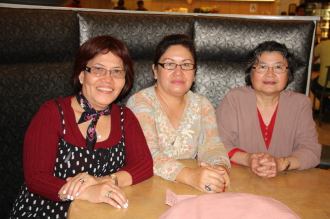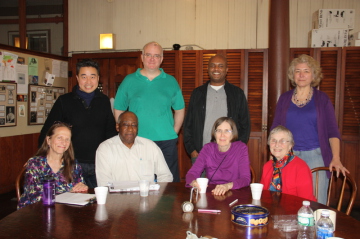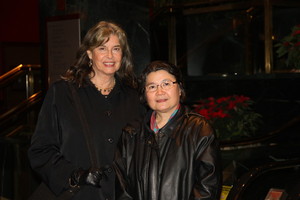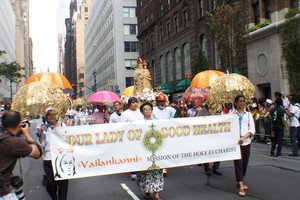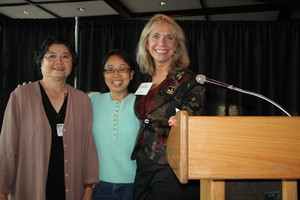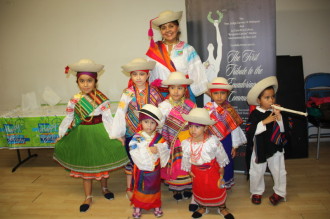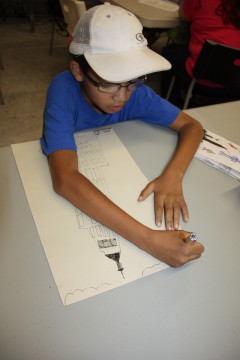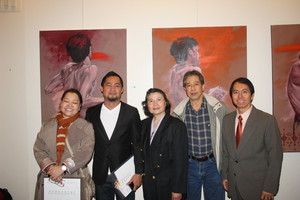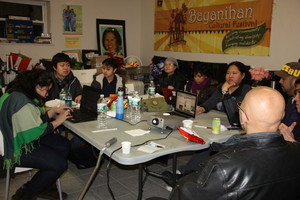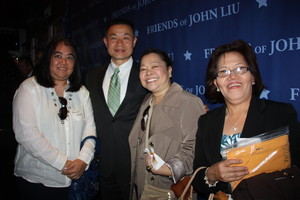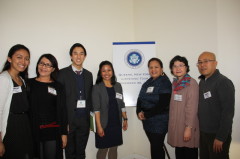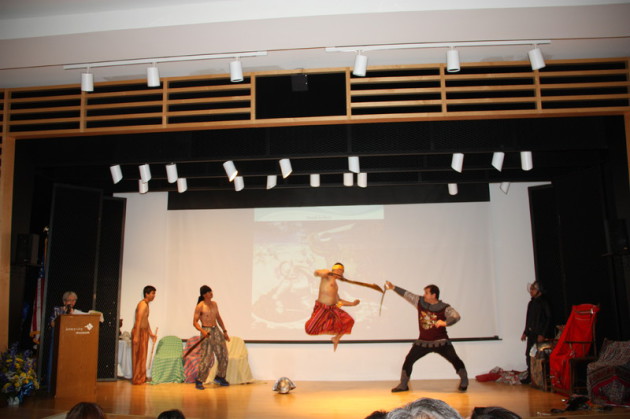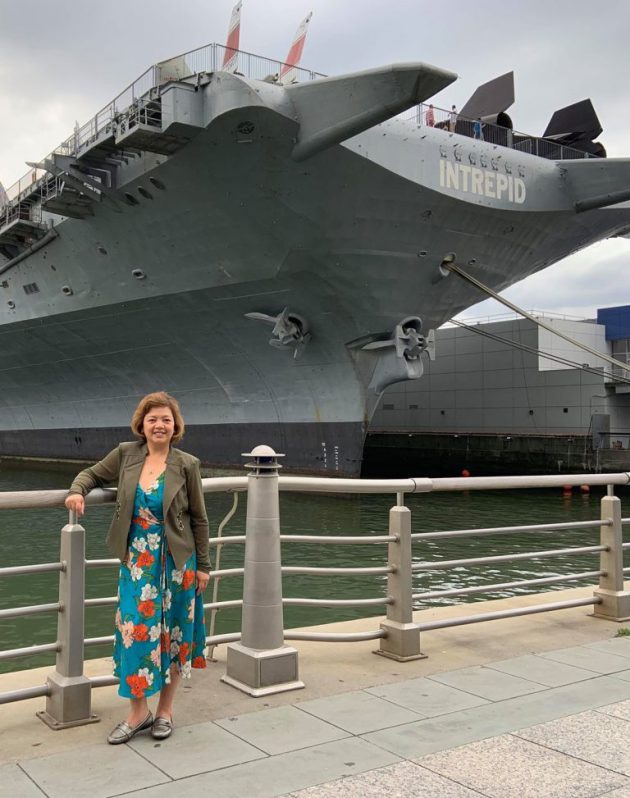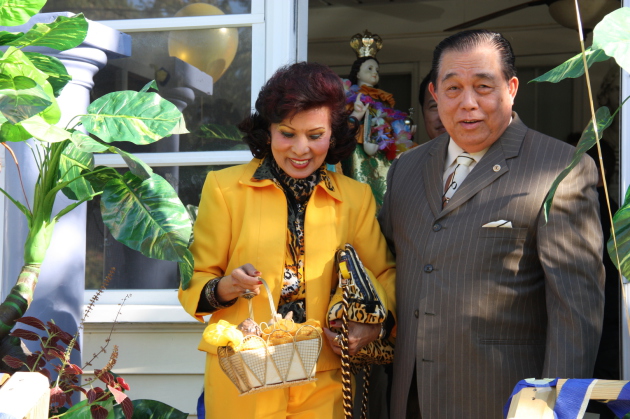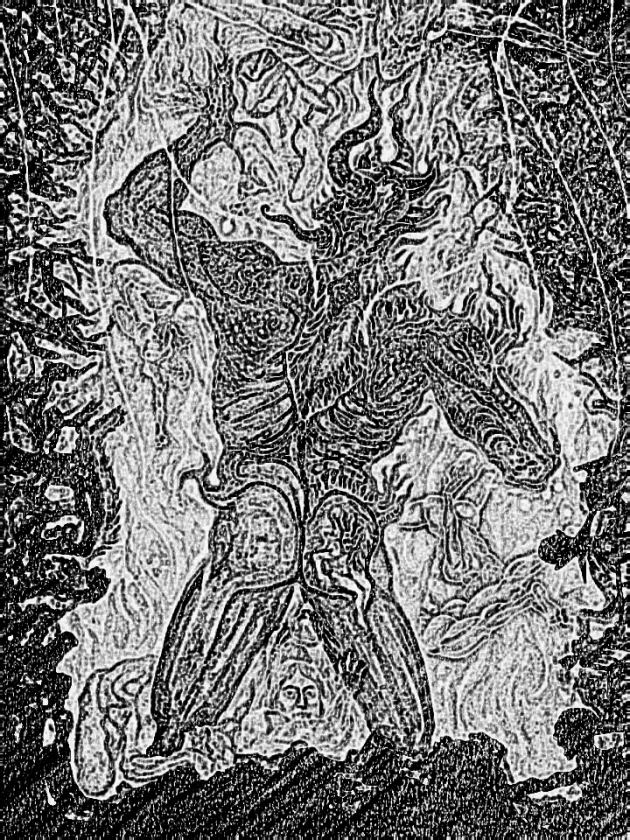VII Some Legends Rise and Fall:
The Rising of Legends
Incidentally, in the process of our mission to write this book, we have unearthed a lot more of hidden treasures of beautiful, extraordinary and inspirational stories which could have remain buried but now have resurfaced as we tell the stories of these great unknown heroes who have lived, and the others living amongst us as the saga and fate of their legacies continue to rise and maybe, to fall.
Rajah Humabon: A Hero or a Villain
The Legend of Rajah Humabon
(Excerpt from “The Coming of the Cross and the Sword”, a Zarzuela Filipina, presented at the Kalayaan Hall, Philippine Center 556 5th Ave, New York, NY 10036 on October 2, 2015. Produced & directed by Myrna D. Santos and Purple Pillars Production, from Las Islas Filipinas, Vol. 1, The Philippine Islands Man of Destiny: The Story of Visayan Enrique, First Circumnavigator of the Globe and The Voyage of Admiral Ferdinand Magellan, a historical novel by Cristo Rey Alunan, based on a historical fact written by Italian explorer and historian, Antonio Pigafetta.)
On March 16, 1521, after more than three months crossing the expansive and hazardous Pacific Ocean and with only three of his five ships left, Ferdinand Magellan and the “Armada de Maluco” reached the Archipelago of San Lazarus with 175 men. On March 31, 1521, the First Mass was celebrated in an island named Mazaua. After befriending the natives, Magellan and his crew were guided to Cebu Island to meet with Rajah Humabon on April 3, 1521. With Rajah Humabon’s permission, Magellan was allowed to bury two of his dead men, in the middle of the town of Cebu, marking the place a Christian cemetery. This solemn Christian funeral impressed the people of Cebu. On April 14, 1521, the Christianization process started with the conversion and baptism of Rajah Humabon, his chief wife Hara Amihan, sons and daughters and 800 other native converts. At the baptismal ceremony, Ferdinand Magellan gives the icon of the Santo Nino to the local queen, Hara Amihan, as a gift for being converted as a Christian. Then the singing and dancing begun. (The festivities carried on the tradition and later will be called “Sinulog”, when new converts sing and dance the Santo Nino song.This was a most significant day in the history of Christianity in the Philippines.)
THE BATTLE OF MACTAN
After Rajah Humabon converted as a Christian, Magellan presented to him the strategic advantage of being a Christian warrior aligned with the Spanish forces of Carlos I. This assurance of increased power prompted Humabon to order all his chieftains to convert as Christians. However, some defied his command, among them Lakan Lapu-Lapu. Determined to have Rajah Humabon be made the undisputed ruler, Magellan ordered all the independent chieftains to acknowledge Rajah Humabon,and warned any refusal to recognize the Rajah would mean death and the confiscation of their property. To enforce his message, Magellan sent a detachment to a peaceful village called Bulaya, where the inhabitants refused to obey Rajah Humabon.
After scorching the village, the Spanish soldiers found the old lady, Agurang Agay-Agay, returning to the village with her grandchild, and they asked for the whereabouts of other natives. Agurang Agay-Agay refused to disclose this information, so they ended up tying her to a coconut tree and accused her of idol worship. She was whipped and after 2 strokes, she fainted and collapsed. The burning embers of the torched village of Bulaya remind the natives of the curse of conquest. Manuel, a native member of the Spanish detachment, disgusted with the dastardly act of his companions, turns around while gazing at the burning ruins, utters angry thoughts crying out:
“Why must I be a party to this ignoble act? This imbalance of justice will not be forgotten, nor will it ever be forgiven. That day will surely come when justice will prevail!”
Ferdinand Magellan wanted to show the Natives the power of Spain by subduing a rebel chieftain. The defiance of Lakan Lapu-Lapu needed a response and such unwillingness to comply with Magellan’s command would not be tolerated. He boasted to Rajah Humabon that he would need no more than 20 men from each of his ships, and he himself would lead the assault in battle to punish Lakan Lapu-Lapu and the inhabitants of Mactan. In the stillness of the evening before the battle, Magellan looking sternly into the distant shore of Mactan, utters his thoughts:
“Oh, cause that destined me to undertake this noble task,
Is this campaign well measured to bring the desired result?
Or a shadowy victory cast in clouded sky or gaseous gaze?
Tomorrow’s date is set and done, while heaven roars in majestic sound;
To watch and see how Spain sublimely protects its faith with blood and force.
A mistake perhaps or folly; that king must do, and knights implement,
To right a wrong or do a deed at all expense!”
The Final Attack
Lakan Lapu-Lapu’s request to wait until morning, the 27th day of April 1521 to conduct the engagement is acquiesced by Magellan. The glowing sun begins to rise as Magellan’s soldiers prepare their body armor for battle. Drifting woods hit the broadside of the command ship TRINIDAD, as debris crashed into the stern of the galleon ship, alerting the Spaniards that they are hitting low tide and are being pushed back into the sea. Although apprehension was written all over their faces, Magellan seemed oblivious to his men’s concern as he addressed his men and inspired them with a call to action. Magellan and his men go into battle formation. The Natives were at a distance concealing themselves and their armaments behind bushes and treetops. The coconut groves abundantly landscaped the natural fortification of the Natives. Magellan, unable to inflict any damage to the Natives, ordered his men to torch their homes.
The Spaniards with torches in one hand are caught by surprise with the sudden audacity of the Natives. This unexpected response is too much for the conquistadores to bear. They do not anticipate the avalanche of human courage displayed before their very eyes. The Natives rush forward to defend their homes against volley of harquebusiers’ fire that horrified the multitude. Magellan was shocked and surprised, confused perhaps, by the abundant response from the Natives. This unexpected reaction was too much for the conquistadores to bear, and Magellan signaled his men to retreat. This retrograde proved costly as the fearful Spaniards decided to run for their lives in a rout. Magellan heroically held his ground with 8 fearless Castilians who were behind, but their ranks were overrun. In the distance, Rajah Humabon, seeing Magellan in retreat, orders his finest guards to rally to Magellan’s side. On the Spanish ship TRINIDAD, Duarte Barbosa, Magellan’s brother-in-law who had just awakened from a drunken stupor, seeing the Natives about to join Magellan’s forces, thought they are about to overcome him. Barbosa orders his cannoners to fire at them, killing 4 of Rajah Humabon’s finest warriors and being annihilated by “friendly fire” eliciting scorn and disdain from Rajah Humabon and his warriors. Rajah Humabon thunders: “Fools! Blundering idiots! Is this the Castilian way of doing battle? Curse the day I sent my troops to defend them. Their drunkenness and lack of unity amongst themselves shadow their own defeat. Woe this day!”Rajah Humabon commands: “Pull out our warriors and save them from the fools. They need not die helping these drunken adventurers!”The war is over for Rajah Humabon. He sulks as Magellan continues to fight for his dear life. Despite the withdrawal of the Spaniards, the Natives of Mactan did not stop their offensive attack. Magellan, hard-pressed from all sides with Antonio and Enrique, stood their grounds. In an act of unusual gallantry, Magellan orders: “Fall back, Enrique! Fall back, Antonio!”
Magellan’s Noble Death
Just then a javelin was thrown and Enrique was quick to parry it away, but instead of hitting Magellan, it deflected and hit Enrique slightly in the face. Enrique continued with his retreat while Don Antonio was not far behind. Magellan, concerned for the safety of his 2 trusted men, turned around and covered their retreat. He had just felled Katalan and was catching up with Don Antonio, when a poisoned arrow hits him in the right leg. Magellan staggered and as he fell, his helmet was knocked off his head. Don Antonio comes back to rally his fallen Captain General, but as Magellan raises his hand, a bamboo spear strikes his face. Instead of grabbing Antonio’s hand, he ordered, “Go Antonio, go!” He managed to stand and tried to draw his sword from his scabbard, but unfortunately, he could not, for another spear had wounded his right arm. Don Antonio, horrified, could only witness the gory sight, as he was helpless to save his mentor. Enraged by the desperate situation Magellan was in, Antonio was about to help him, but Gunsang Sundang slashed Magellan on his left leg, causing him to fall with his face downward, knocking his helmet off one more time.It is piteous sight as the Mactan warriors pounced upon him mercilessly, and sea of angry Natives fell on his lifeless body, each one contributing to his demise with the point of their spears and bolos. If at all, it is a welcoming coupe de grace that no one person could lay claim to Magellan’s death, for it took the whole tribe to end his unyielding spirit.
Lakan Lapu-Lapu gives Magellan a noble death,a strike to the heart with his sundang! Magellan looks at Lapu-Lapu, and draws his last breath, as Lapu-Lapu stands tall and looks at his people. He raises his sundang to signal that death has come to Magellan. It is only proper that such a noble man be slain by an equally noble adversary. With his death, the sky darkened and a lightning ray streaked the high heavens as if to signal the conclusion of a saga and the end of a dream. Don Antonio Pigafetta, with outstretched hands, shouts: “Farewell, Captain General, our mirror, our light, our comfort and our true guide. Lakan Lapu-Lapu, looking at Pigafetta, replies: “Save yourself, young man. Your Captain is dead! Tell the world what you saw today. Remember that we submit to no king and pay no tribute to any power. As you have witnessed, while you have lances of steel, we also have lances hardened in fire.” In an act of kindness, he sends a comforting message, “Go and live but let us live in peace. This is our land and no power on earth can take it away from us!”
The Outcome
And while the dead body of Ferdinand Magellan lay prostrate on the sands of Mactan, Lakan Lapu-Lapu, in response to Rajah Humabon’s request for the body of Magellan, issued his stern warning, a cry that reverberated around the globe. Lakan Lapu-Lapu shouts: “For all the riches in the world, I will not relinquish Magellan’s body. We will make him live amongst us, to remind the people of Mactan that we surrender to no man, and that any adventurer who comes to dominate our people shall himself be dominated!”
Lakan Lapu-Lapu speaks, addressing his weary tribesman and Bathala:
“Bathala, by your design we slew these wicked men,
From distant lands they came, they took, they changed our way of living;
Unmindful Masters, they trampled our sacred shores,
For in their mind, we are meek, humble and weak.
This land which we have is always ours.
When time began, we tilled this land.
What rights have they to claim a deed,
When was no amount paid?
The might of the Sword is not the key;
Nor the Cross, the symbol for them to stay.
It is not the price for them to make,
For in our hearts, this land is ours to keep.”
After all, the demise of Ferdinand Magellan, the conquering Captain General, gained an unprecedented prestige for the immortalized tribe of fearless warriors of Mactan who defeated the most powerful army of the most powerful king in the entire civilized European worlds. As conqueror of conquerors, Lakan Lapu-Lapu earned for himself the plaudit of disbelievers as the noblest soldier in the history of war in the Pacific.
"It is the duty of every Filipino to advocate for the renaissance of Philippine Art, Culture and Tradition now and until the end of time".
~Cristo Rey Alunan/Dr. Gonzalo “Zal” Velez
B.O.S.S.: The Battle of Sibuyan Sea
October 24, 1944 is a significant day in the world’s Naval History and may even be the day of the Greatest Naval War in WWII because it was then where Japan’s biggest battleship, the MUSASHI, one of the two biggest war vessels in the world then, along with the USS Princeton and the USS Indianapolis, were sunk. However, the mighty USS Intrepid was able to survive, thus paving the way for the successful landing of Gen. Douglas MacArthur in Leyte Gulf, on October 20, 1944, four (4) days earlier before the Battle of Sibuyan Sea happened.
The Battleship Musashi, owned by the Emperor of the Imperial Navy of Japan, was built in secrecy at the Nagasaki Naval shipyards, in violation of the Treaties of London and Washington. It is said that the workers who built the ship were killed thereafter in order to keep and maintain its very secret and vital mission. “While the actual physical battle was largely conducted between American and Japanese navy and air forces, a little-known but ultimately controlling fact was the crucial role played by Filipino World War II Guerillas in the final outcome. They were the ones responsible for the recovery and transmittal to the American military under Gen. Douglas MacArthur in Australia of confidential Japanese documents containing the war plans of the Japanese Navy, which had been lost at sea when the aircraft carrying Admiral Koga crashed in Philippine waters” (near Carcar, Cebu).
– Jesus Terry Adevoso, Asst. Secretary for Veteran Affairs.
While the Yamato, the Musashi’s sister ship is now a museum in Japan, the USS Intrepid stands proud and mighty as a public museum in America for everyone to explore. Many, however, do not know its significance during WWII, particularly in the Philippine Seas. It is sad to note that even the Philippines does not have a display of this significant Battle of Sibuyan Sea at our National Archives and Museum. Hence, it will be through a yearly commemorative event that we, Filipino-Americans will become more visible in the history of New York by recognizing its great significance in the American War in the Pacific, thereby honoring those unsung heroes who have sacrificed their lives for freedom and love of country, not to be forgotten in the years to come by future generations.
~Janette Andrada-Cruz
Colonel Yay Panlilio Marking: The Filipina Guerilla
Elena O. Abella burst into tears when she saw the book that I ordered, The Crucible by Colonel Yay Marking. More so when she glanced upon the frontispiece showing the author and her three young children. Manang, (older sister) as we fondly call her, has been telling us for months since she joined our Home Living, about the woman who have influenced her life and brought her to America, where her story begins with Marking, a Hero Unknown.
Yellowed, brittle, and dog-eared was the title page of the book given to her (You-Forever by T. Lobsang Rampa). On it, Manang Elena wrote: “Col. Marking Yay Panlilio was a writer, she wrote the book, Where Our Country Begins. She gave me (3 of them), “very lovely.” The books are in my home in Pangasinan.On the next page, a picture of Col. Yay was pasted and Elena wrote: “She was a journalist in the Manila Times. Yay was my first employer since 1962 until her death in 1978. Also pasted was another photo: “Maya was her granddaughter. I took care of Maya since she was three years old until her teens.” On the back of the book’s front cover, Yay wrote: “Xmas, 1977... “Ellen, This will explain all about everything. It is the book most recommended by professors. Most words are clear here, for others, use your dictionary. May you enjoy and put only to good use your special talent. Good Luck, Ma’am.”
When Yay went back to the US in 1976, Manang Elena accompanied her for medical treatment. Yay was very sick, unable to swallow except for the pureed food, Manang prepares. With utter devotion and compassion, Manang took care of her as they lived alone together in Aquebogue, the far end of Long Island, until her final hours, recalling it with tears flowing down her cheeks. To this day, Evangeline (Niki) Falek, the granddaughter of Yay through daughter Rae, is still in touch with their Manang Elena who is now eighty-two years old. Still, her eyes teary every time she reminisces life with Yay and how she held her beloved employer and friend in her arms as she died. Manang remembers how Yay taught her to be firm and proud, to stand her ground for truth, to be brave and forthright like a soldier, values she has imbibed to this day that have guided her own journey in America.
Yay Valera Curtis Panlilio Marking, a journalist, born in Denver, Colorado to an Irish father and a Filipina mother, who grew up in the freedom of the United States and came to Manila as a newspaperwoman when she was eighteen. During the war, she left her children, a daughter and two sons with trusted friends in Manila and she took to the hills as second in command of a Guerrilla group commanded by Marcos V. Agustin. She was the “brains” and the "mammy" of the guerillas and a regiment was named after her, Marking's Guerillas. This guerrilla group harassed the Japanese Army until Gen. MacArthur liberated the Philippines. Her importance to the movement is beyond remarkable, that the “boys” she loved so much, will even give their own life for her. “Many of them did, in fact. Gladly.” In 1951 "Colonel Yay" Panlilio Marking was awarded the United States Medal of Freedom with Silver Palm. After the war she married Gen. Marking (Marcos Villa Augustin) on September 11,1945 in Chihuahua, Mexico.
The Crucible: Activism Continues Post War
Her1950 book, The Crucible, is an account of her own biography that narrates her incredible experience as a journalist, triple agent, leader in the Philippine resistance against the Japanese, and lover of the guerilla general Marcos V. Agustin. “It was meant to be more than a good story, and certainly more than a mere account of her life experiences during the war. Rather she saw the book as a necessary act of political redress and retribution to publicize the important yet unrecognized contributions of the guerilla resistance in the war against Japan, to recognize the role of Filipinas in wartime efforts, and to articulate a nationalist formation of mestiza Filipina identity.”
“But unfortunately, The Crucible failed to significantly influence how Americans or Filipinos remember World War II. Despite the many war-era books that mention Panlilio with admiration and respect, her name is now relatively unknown. Today, few Americans are aware of the guerilla resistance in the Philippines, and fewer still know the details of Filipinas’ involvement. And although Macmillan’s release of The Crucible, one of the first Filipina-authored works of literature published by a U.S. press, was a landmark in literary history, the book was never recognized or studied by scholars of Philippine or Asian American literature. The Crucible is a call to reconsider how we tell the story of World War II.” How she, the “boys” and the man who led them, made an army out of legend. They worked eighteen hours a day in the hills, lived on less than nothing. She fought her own war against the Japs. And that she too had malaria and dysentery for months, lay in muddy huts when she had the awful chills and fever, marched in the few hours a day when she was free of them, rarely had the solace of drugs of any kind.
The Marking Guerillas' Creed
The creed imbeds the right of every Filipino to walk in dignity as they bear arms against the enemy, its allegiance to America and the hope for an independent Philippines. "We believe that God is with us all the while we do right, and the victory shall be ours in the end." On the April 9, 1942 Death March and Fall of Bataan, Yay wrote: “If the least we do is fertilize the soil where we fall, then we grow a richer grain for tomorrow’s stronger nation.”
~Lutgarda M. Resurreccion
Graciano A. Militante, Sr: Taming the Angat River and Beyond
How the River Flowed
My grandfather, Graciano A. Militante, Sr. had always been a very wise and quiet, even funny presence in our family vacation trips to his rice farm in Palo, Leyte, his birthplace and where he had retired. I was this 5-year-old girl from Mati, Davao Oriental, who had the first coconut planting experience, a ritual we observed every vacation. He took me and my two brothers to drop young coconut saplings into holes in the ground and declared that each coconut tree bore our names. To love and care for the Earth was my first, among the many lessons from him.
He was the civil engineer who built the Angat River Dam in Bulacan during the time of Commonwealth President Manuel L. Quezon. We only came to know the historical fact, many years after he had passed, during a quiz game on a local TV show, Eat Bulaga, that he was the first Civil Engineering graduate of the Philippines. I do not think he even knew as he never spoke of it at all. It was a pleasant surprise and indeed a great source of pride for us all.
Lolo Anong, as we fondly called him, had come to America to study and he worked as Caregiver for his friend Fran Lou, a paraplegic in Ohio. In the 1900s, Filipinos were freely allowed to travel and enter the mainland as subjects of the American Commonwealth regime. Although he had already finished high school in Palo, Leyte, he had to start all over again in first grade grammar school, a lanky, brown-skinned Filipino among a sea of white-skinned children. Lolo Anong easily surpassed his classmates and was top of his class when he finished. Despite attaining the highest grades, he was not honored as valedictorian. He was a colonial subject, deemed not equal to his white classmates.
It was about this time that Lolo Anong received news that his father, our great grandfather Lolo Tonio, had fallen from a coconut tree while harvesting “tuba” (a local wine) and was dying. He was filled with so much grief and wanted to come home. The story I heard was that Lolo Tonio asked Anong’s older sister Sofia if there was “something higher” than high school. She said yes, it was called “college,” as she herself was a teacher. Lolo Tonio’s reply was, “Tell Anong not to come home and not to worry about me. Go on and finish that ‘higher’ (hitaas in Waray language) school.” It was sheer act of courage during those times for father and son to decide not to come back home to pursue the “higher school.”
Here he was, all alone without home and family, still in deep sadness grieving for his father. Winter was fast approaching. He had to find work so he could study further. So, he knocked on the door of the house of the Ohio State University president. The butler told him, “We need a cook.” With his last five dollars, Lolo Anong bought a cookbook, returned to the butler, and said, “I can cook!” Years later, my mother would teach me how Americans baked stuffed chicken, a skill learned from Lolo Anong, the Cook.
The story goes that Lolo Anong would cook while studying two books, the cookbook, and his engineering subject textbook. This would go on for years. He aimed to be a member of the Phi Beta Kappa honor society. While he passed all his courses in civil engineering, he could not attain the high QPA or quality point average to qualify as member of the honor society, because he had to work to survive. He would later ask his fourth daughter Priscilla (who studied Paleontology at Stanford University) for the “Key,” the token and symbol of those who made it to the honor society. I realized early on from Lolo Anong that excellence must be the goal, and not just simply to graduate.
My mother recollected that after Lolo Anong obtained his Civil Engineering degree, his employer, the president of Ohio State University, sat him down in his office, gave him a cigar and said to him, “From now on, you are no longer a servant; you are a professional.” He also said that he had a duty to return and serve his home country. Once home, Lolo Anong was in due time appointed Chief Project Engineer of the Angat River Dam which still stands today, supplying water to the people of the Central Plain of Luzon.
Being an eligible and good-looking pensionado from America, he met and married the beautiful Anita Juan, our Lola Aning, who descended from a landed Filipino Chinese family in Gapan, Nueva Ecija. He built the first concrete (“bahay na bato”) house that also served as his office in Plaridel, Bulacan, where he raised twelve children, six girls and six boys, quite comfortably on his monthly salary of five hundred pesos, and even owned the first Model T-Ford car in town. Also, the “engineering genes” ran strong in Lolo Anong’s family, with three sons who became successful engineers. My mother Amarie witnessed the power and influence her father wielded as Chief Engineer of the “patubig” (water supply) for the rice lands in five neighboring provinces. Politicians would offer to peddle his influence, but he never caved in nor did he get rich. He was known to be firmly honest, humble, and kind, fair, and wise by all who knew him.
When the Japanese bombed Pearl Harbor, Hawaii on Dec 7, 1941, it was Dec 8 (in Manila), my mother’s 21st birthday and her last year at the University of the Philippines. Like thousands of students going back to their provinces, she rushed home to Plaridel, Bulacan, with only the clothes on her back and her precious picture albums.
Because he had to protect his young family, Lolo Anong presciently found a way to relate to the incoming Japanese. He told his oldest daughter, “We have new masters now. We must learn the language of the new masters.” So off Nanay went to learn Nippongo (with Katakana and Hiragana writing systems) at the existing Japanese language schools. My mother learned very quickly and utilized polite, courtly Nippongo; effectively communicated and negotiated several dangerous incidents and intense conflict situations with the “new masters;” and spared the lives of several Filipinos accused by Japanese soldiers. Lolo Anong’s intuitive foresight on learning the master’s tool was keen and on point.
After Pearl Harbor, the bombing and air raids that followed shortly forced Lolo Anong’s family to retreat into Malanga-ang Hills to live in safety for some months. They returned to Plaridel where the concrete “bahay na bato” was still intact in the rubble. This house attracted the new masters.
At the height of the occupation, General Akutso, head of the Japanese Imperial Army Engineering Corps, came to utilize the ground floor of the concrete Militante home as their headquarters. Partly because of Nanay’s honed skills in using their language to the point of becoming a Japanese language teacher herself, the Japanese captain treated the “Miritante” family like his own. He came back three decades later to visit and happily reunite with the family. It was an ironic milestone to embrace a labeled “enemy” who affectionately treated us like family despite the shared experience of a cruel war.
This was the genius of Lolo Anong’s “strategy” to ensure his family’s protection during those very difficult years of the Japanese occupation. By wisely creating a cordial, familial place for the Japanese officers and practicing the basic human values of cooperation and harmony, the Militante family survived the war practically unscathed and unharmed. While they witnessed atrocities around them, the presence of the Japanese captain in their house protected them from that fate. Indeed, this clearly showed that the bonds of human beings are so much bigger and more enduring than socially imposed labels or political ideology.
Lolo Anong always wanted to go back and retire in his hometown of Palo, Leyte. On one vacation when I was ten years old, we left my baby brother Alex, just a toddler, for him to babysit while we went to church. We came back and found my grandmother’s dining area all cluttered with pots, pans, and littered with spilled bottles of sugar, coffee, flour beans, and what have you. Baby Alex was poking his arms and little hands into every jar and bottle, tasting every content in his mouth, and just having so much fun! He was wet with dirty stinking diapers, while Lolo Anong watched calmly nearby, smoking his pipe. “Why all this mess, Lolo?” we cried in shock. He chuckled softly then declared, “Give him freedom!” Baby Alex had the most thorough cleanup that day. Yet, he has grown up to be the most adventurous, fearless, and courageous of us all, daring the hot-as-hell deserts of Kuwait as an Oil Rig Driller to support his family.
The babysitting incident sent everyone laughing, especially the ending, Lolo Anong’s declaration of freedom. That became our “battle cry” every time we teased our parents on some rule to be followed, much to their chagrin. He impressed on us the essence of freedom, that it was fun, even chaotic, but exhilarating and to some degree, quite harmless. In déjà vu, freedom means pure self-expression.
That Lolo Anong never went to church was never an issue because my loving grandmother, Lola Aning, devout Catholic that she was, never questioned it out of respect for his belief (I learned later that he was a Freemason in America). His church-less Sundays nevertheless stayed in my memory without judgment because nobody said it was wrong. This memory of Lolo Anong quietly sitting on the sofa on Sundays set an example of acceptance that would serve me well much later, when I began to seriously question the religious conditioning I had in search of my own existential truth.
After my devoted Mass-loving Lola Aning passed away in Palo, Leyte at 65 years old, Lolo Anong moved to Diliman, Quezon City, to help support his three youngest children living with their sister Dr. Priscilla Militante, a geology professor then at the University of the Philippines. My brothers and I were in college then, living in campus dorms, until we all transferred to the professor’s cottage. We reveled in hilarious camaraderie with him, even some antics that drove my aunts crazy. He always treated us gently like buddies and friends as he regaled my brothers and cousins with stories of his adventures and life in America.
He lived on until about 87 years old, a smoker until the end. Yet he was a most contemplative man who was an example of equanimity amidst family conflicts and dissent, even as he sprinkled nuggets of philosophical insights when things quieted down. When his time came, along with aunts and cousins, I said goodbye to him and witnessed his peaceful transition at the U.P. campus infirmary.
Lolo Anong always stressed the importance of integrity and humor, industry and determination, fortitude, and courage in the stories he shared. The epitaph on his tombstone as I recall, stated how critically important this “journey” was, rather than its “destination.” It puzzled me deeply for a very long time. Looking back now, I know this is the heart’s wisdom. He had opened Nanay’s mind to other realities, like learning the Bible, which unfortunately was not part of traditional religious training. Lolo Anong encouraged us to be tolerant of others’ beliefs and creeds, as he truthfully said, “Not all Catholics go to heaven.”
Now I have realized that the journey Lolo Anong was pointing at, is a Journey in Higher Consciousness, that our purpose in life is to evolve the soul to higher dimensions, not really knowing our destination, but trusting the Creator’s Guidance to lead us there. Bless dear Lolo Anong who opened my way!
By: Lutgarda Militante Resurreccion
Jaime Carlos de Veyra: Out of Babel
“Itaga mo sa bato”, indeed this very emotional proverb is one of several unclassified Filipino words that do not have a direct translation in English, that need context to fully translate them. More so, in an archipelago of more than seven thousand islands, the Philippines have inhabitants who speak some 120 to 817 native Malayo-Polynesian languages and a number of Spanish-influenced creole varieties called Chavacano in South Western Mindanao, along with the use of the Arabic script in southern Muslim areas of Mindanao. This noise of similar sounding dialects needed to be reconfigured into a harmonious symphony of a common language. Dissecting, collating, and codifying the spoken words and ancient scripts that make up this linguistic tower of babel demanded dedication, determination, and hard work from generations of Filipino leaders designated by the Philippine Commonwealth Government. On November 13, 1936, the Surian ng Wikang Pambansa (Institute of National Language) was established and mandated to choose which native Philippine Language would be used as the basis for the national language.
In 1937, under its first director Jaime C. de Veyra, recommended that Tagalog be adopted as the national language. At this point, it could be surmised that the choice was most likely influenced, not only by its relatively well-developed prose, but also by its proximity to the center of political and economic power, Manila, which is located in a major Tagalog region. As a national concern for progress, there must be one language that all the Filipinos can relate with, to bond them together as they express their ideals as a people. Consequently, the well-facilitated transfer and communication of a Filipino identity through a codified, organized national language has rooted the consciousness of global Filipinos in a deep knowing of WHO WE ARE, and is bequeathing to future generations a proud and firm understanding of our cherished heritage and values.Raising the Status of Indigenous Philippine Native Languages
My name is Fausto “Aka Tito” de Vera. Growing up in Quezon province, I have a rich remembrance of this town, my home. There are two de Veras, one is spelled De Veyra, and mine, De Vera. These 2 families used to be one, hailing from Rosario, Batangas. There were 2 brothers, one was smart enough and asked his sibling if he can use their family lands to send his children to college, so they did, and became all professionals. When the time came, to talk about distribution/sharing of the inheritance, he has denied and kept the heirloom to himself. His brother, who is my great grandfather cannot express his anger in any other way but took his bolo and buried its sharp edges with all his strength and anger into a bench. He then prepared three horse-driven caravans with all his belongings and headed to Quezon and started anew. This is the story I have heard from my father, how he earned those lands and now handed to me. When I was young, there was a relative who died in Tanauan. As we went to visit and paid our last respects, a cousin showed me the bench with the mark of my great grandfather’s fury. Over time, the wound it caused to my father’s heart has healed, but our family name persisted without the “Y”.
I have no recollection of meeting or knowing him, except the common stories that I heard and passed on over time. Jaime Carlos de Veyra was born on November 4, 1873, in Tanauan, Leyte Province. He attended public and private schools, and finished college at Colegio de San Juan de Letran, Manila in 1893. He studied law, philosophy, and letters at the University of Santo Tomas, Manila, from 1895–1897. If he is one of the children of my great grandfather’s brother whom he sent to college with the family’s lands, and became successful, if he is the one who became the Governor of Leyte in 1906 and 1907, and a member of the Philippine House of Representatives, 1907–1909; if he is the father of Manuel R. de Veyra who was a doctor during World War II serving at Bataan and Jesus R. de Veyra who became a judge and was Dean of the Ateneo Law School, 1976–1981, bringing pride and honor to our family and the nation, then the means have served the purpose for a common good. We, too, can use our wealth and inheritance to serve the many, and not just the few.
I got the chance to visit Tanauan, Leyte, with my father to visit the center of De Veyra clan situated near the gulf years ago. We were there to amend the feud of the past, but soon the Typhoon Yolanda devastates the region and swept the De Veyras into the ocean. It was sad, I felt the pain of a failed new beginning to reunite the two de Veyras together. I may not have the education that he got, but my heart is light with the honor and legacy that he shared with us.
~Fausto “Aka Tito” de Vera
Dr. Jose P. Leviste: The Rural Doctor
If you are from Batangas, you will never miss the Levistes. While Dr. Jose “Peping” Panganiban Leviste of Bauan, Batangas was known as a rural doctor, his legend and legacy is kept dear among the Batanguenos. As the owner of vast farmlands, he distributed agricultural lands to five hundred of their “kasamas”, 3 hectares a piece as a family. While this is a big help to the livelihood and industry of the rural folks, this made it difficult for New People’s Army to steal, as each one oversees their own ward of lands. I was among one of them as a recipient of his generosity, kindness and mentorship for my business, Irene Lumbrera Farms. He helped me secure a loan to borrow from the Development Bank of the Philippines (DBP) and encouraged my livestock industry. I met him through “Donya Trining”, Trinidad Leviste Endaya, his sister in the bus one day and became friends since then.She is also married to a doctor, Eustacio Endaya, and have a house in Queens.
As a doctor, he graduated from the University of Santo Tomas. He practiced Medicine and Surgery while being an entrepreneur and chairman of DBP. He was all, a great family man, educated and has God in him. He taught how to love as he has received his countless blessings. He was born with a silver spoon because his mother, Rufina Panganiban Leviste was landed and owned sugar and citrus plantations in Batangas. He made it possible to raise responsible social entrepreneurs, businessmen and educators as he was.
To all his children and family, his legacy and services as the people’s doctor has impacted the most. He did not treat his being a doctor as an income, but service. His integrity, honesty and sense of fairness has without boundaries. He loved everything in life, culture, arts, theater, sports, and chess. His thirst for learning and science is insatiable. He is a strong advocate of integrating sciences in everything in life. He is always humble, compassionate, and generous person. He is a big man, with big voice and big heart and a legendary sense of humor. To his wife, lawyer Dolores Padua Paredes from Abra and la Union, he will always be the gentle giant.
To this legacy, his children wanted to pay forward, as he already paved the way for them. In all their successes, their father has a part and influence. They are not just grateful for being a part of the legend, they want to live on that legacy, that someday, their own legends will rise.
Kapitan Kulas: The Outlaw Hood
There was a man by the name of Kapitan Kulas who owned a vast area of farmlands in Tayabas. As there was drought, his taxes piled up and cannot pay, the government took and repossessed his lands. He got so mad and hid himself in the vast mountain range of Sierra Madre Mountains, from the north of Cagayan to the south of Tayabas. He is the king of this jungle. He knows the ins and outs, every nook and cranny of the mountains. It is a beautiful place along the coast of the Pacific Ocean. The place is noted for its caves, where no ordinary man dared to go, or a sure death, as no one finds the way out. Alone and armed, he knows his ways in the caves and the forests. Anybody looking to arrest him was killed, as he put justice in his hands until he became a fugitive. He is an outlaw, but somewhat a Robin Hood to the natives. He is a friend of my father, who is the chief of police at that time. He was instrumental in negotiating between Kapitan Kulas and President Manuel L. Quezon. He eventually surrendered and was forgiven. Tayabas became peaceful since. My father has told me more about Kapitan Kulas and his legend. Everybody in Quezon knew him. Later, there was a movie starring Ramon Revilla as Kapitan Kulas. Could it be the same legend?
The Legends Beneath the Old Acacia Tree: The Birthing of APICHA
I first saw this young Filipino immigrant in the prime of his life (who used to work in a Wall Street firm), bed-ridden with an illness called AIDS. My heart went out to him, like he was my own family. He was very secretive and skeptical of all who visited, as he was hiding his condition from being known by family back in the Philippines. One of his parents was a political figure, a representative of a province. He was just one of them, later we came to know about others like him whose families had abandoned them out of ignorance in fear and shame, who were either living alone or residing secretly with sympathetic partners or friends. Via the proverbial grapevine, their craving for Filipino comfort food reached the few of us who heard their plea. A small group of friends went to their places bringing food like the pumbrera that reminded them of home and family. For a while, we took the place of their absent mothers, fathers, sisters, brothers, and friends. There were few social services available then for those who suffered like him. The last wish of this young man was, “Bury me under the shade of the Acacia tree,” remembering the tree back in his native home, Philippines. The Acacia, native to tropical and subtropical regions of the world, is a beautifully gigantic tree, with leaves and branches spreading all around like a huge umbrella giving refreshing and cool shade. To ancient Egyptians and Israelites, the sprig of acacia symbolizes the soul as the immortal part of us which can never die, and the evergreen quality of the tree reflects the human spirit.
This dying wish to rest under the Acacia is auspicious, as many happy moments of our childhood were spent enjoying its
luxurious green shade. Like this young man’s soul that longs to be at peace once again in the Acacia’s motherly embrace. In our HIV/AIDS work, the Acacia Tree grew into a symbol and inspired the
project Acacia Fund, that nurse volunteer Gilda Sambajon started and developed to help with end-of-life issues of people like this young man.
A Tree Grows in a Holocaust of Ignorance and Fear
The dark night of the soul came with my first salaried job, teaching about HIV/AIDS in the early days of the epidemic. Filipinos were then dying of AIDS in alarming numbers in the Asian & Pacific Islander group in New York City. The disease was strange, weird, unknown, and fatal, with death seeping slowly as opportunistic infections come in rapid pace to ravage and weaken the body. No medicine was yet known to cure or control. The only knowledge then was that the disease was transmitted by sexual contact and addicted drug injections. However, rumors were that AIDS was also carried by saliva, other fluids, and touching. All communities were locked in fear; HIV-infected individuals were catatonic, not knowing whether they will live or die soon. Authorities and government leaders were in denial even as death numbers piled up. Blame towards homosexuals who were first struck was rampant, and homophobia reigned over friendships, relationships, even simple encounters. The belief equation was that sex equals death. To this dying hope and despair, APICHA which stands for Asian Pacific Islander Coalition on HIV/AIDS was born in the center of a cultural mosaic that is New York.
Experiencing High Levels of Frustration and Discomfort with Language
There was no language to describe sexuality that is value-free, free from “sexhate” or “sexshame” (Antony Grey, 1993). We were very uncomfortable talking about sexuality and sex, much less to teach the subjects to mature adults. In our most personal levels, we as individual workers and volunteers had to re-examine our own beliefs on human sexuality, the kind that the mystic St. John of the Cross calls “Dark Night of the Soul.” We had to process our own sexhate and/or sexshame issues before we could express our ideas about it to others (in outreach, teaching or training), and change it to a positive attitude of “sexhealth.”
As I thrust myself into this new job, the ignorance on precisely how the disease behaved threw a pall over us as we scrambled to find creatively gentle ways and means to pass on available information and tell people about unsafe sex, but much less about needle exchange in drug use. We distributed condoms, explained its use in culturally proper ways, and dealt with communication barriers, such as, language, sexual taboos, and homophobia, in one-on-one outreach activities. people refused to speak about sex. There was always anxious silence when the topic is brought up and body language showed repugnance and disgust, or just downright verbal or physical rejection.
On local ethnic networks, the shame and stigma of HIV/AIDS most intensely confronted the healthcare professionals, like
newly arrived nurses from the Philippines and abroad, who were either uninformed or threatened by their families with divorce and separation if they worked in the hospital AIDS ward. Indeed, it was a
most trying but challenging time for discarding old, useless, harmful beliefs on stigma, judgment and shame and changing these into useful, pragmatic, beneficial beliefs that lead to virtues of
acceptance, compassion, and loving kindness. It was also a frenzied time of planting seeds of comfort for those stigmatized and frightened, of opening doors that had been tightly closed, and letting
in the fresh air of hope that, given all we could do best, all will be well.
To the prevailing belief, a strong counterpoint had to be silence equals death. It was a strategic message to inform
high-risk groups and stimulate the public to open up tabooed topics, such as sex or death, for discussion in private, confidential settings. There were hardly any source of knowledge or grassroots
experience for guidance. We all had to get the facts ourselves via “boots on the ground,” to learn from “ground zero” to form basic assumptions, formulate theories, and try out different strategies
that hopefully would work. To all of these, APICHA took the challenge of finding pieces of a puzzle scattered (or lost) all over the place,
then finding each piece, one by one to see what fits or does not fit the whole picture. The process was very tedious, mired in fear and doubt, even despair that clocks were ticking as infected people
were dying in numbers.
Digging and Rooting APICHA in the Filipino American Ethos
An American-born Filipino, John Manzon, was the first Executive Director of APICHA, Inc. (1989 – 1997) under sponsorship of The Family Health Project of Suki Terada Ports and five other Japanese- American women composed its Board. The clients, staff, outreach workers, volunteers, consultants, and supporters were multi-racial and represented large Asian & Pacific Islander groups. An immigrant Filipino American woman, Therese R. Rodriguez, currently heads what has grown into a Federally Qualified Health Center, named APICHA Community Health Center (apicha.org). It may be stated that these leaders’ Filipino ethnicity energized much impetus for digging in and rooting APICHA’s beginnings in the Filipino American community, abetted and encouraged by concerned Filipina nurses who served in hospitals and were eyewitnesses to the ravages of the AIDS epidemic. Their leadership then continues to inspire us today, and we are proud that they are Filipino-Americans.
All Hands on Deck!
To the many Filipino Americans who joined hands in this mission, you will always be remembered, as we remembered all those people, who suffered the unknown epidemic; to APICHA who became voices to these ignorant victims, with PACEC, Inc. (Philippine American Community Executive Council) led by Venilda G. Jaynal, first woman president of PACEC, the largest umbrella organization of Fil-Ams in Northeastern USA, and an enduring pillar of the New York Fil-Am community from the 70s to the 90s, who made it the cornerstone of her advocacy. With support and resources from Gilda Sambajon, Irvi Sulit-Woo, Ludy Resurreccion, and Indira Parmar, Raquel Ordonez, Angela Timtiman, John-John Manlutac, a nurse with the Filipino Advocacy Group, Claire Melendez (oncology nurse at Memorial Sloan Kettering and Silliman University Alumni Association New York), Jorge Ortoll and Ma-Yi Theater, this enabled the PIEMBRERA Project for the services of these victims, until social services were made available through APICHA’s advocacy.
NGO FORUM ON WOMEN IN BEIJING 1995: Looking at the World Through Women’s Eyes, APICHA panel presentation: “Impact of Migration, Sexual & Economic Exploitation on Asian & Pacific Islander Women in America – Focus on HIV/AIDS” (by Ludy Resurreccion & Indira Parmar), 2 September 1995, Beijing, PROC. Finally, an international forum where a Filipina and an Indian woman showed the form, shape, and impact of HIV/AIDS among Asian & Pacific Islander women in New York City, and the APICHA model of prevention and advocacy roles. Three decades later, the young Filipino man’s spirit imbued in his Acacia Tree has truly grown its shade, like the phenomenal maturing of APICHA into a Community Health Center, serving the once-invisible, voiceless people, and even contributing to the New York State plan, “Ending the HIV/AIDS Epidemic”. And yes, it did!
By Ludy Militante Resurreccion
Ma. Consuelo Almonte: Icon of The Aging Fil-Am
Before she was dearly called “Tita Connie”, she has an exciting diplomatic career as Assistant to the Press Minister of the Pakistan Mission to the United Nations for forty three years. She met "almost every significant political figure that had been responsible for the rising (and sometimes falling), the shaping and the molding of the very people who made the history of Pakistan," according to Marium Soomro in an article entitled, "Consuelo: A Window of Pakistan." As she recalls, "It was my second home, the best part of my life." In gratitude, the Pakistani Government awarded her the Tamgha-e-Kidmat, the 7th highest honor given to military persons or civilians upon the invitation of then Prime Minister Motharma Benazir Bhutto.
As she returned to the Fil-Am community, she felt that the best life path for her is to give back and make a difference in the lives of seniors and elderly persons by "Preparing and Enjoying the Golden Years ". Indeed, the best and most satisfying life is serving those who are truly in need. She continued her legacy as the “Face of the Aging Fil-Am.” she has become an icon in her own right, as acknowledged by former Consul Generals of New York, Mario de Leon, Theresa de Vega, and Claro Cristobal. For Connie, old age is a milestone she would like her fellow senior citizens to acknowledge with grace and without isolation and bitterness.
Her ultimate dream, as she founded the Philippine Community Center Services for the Aging, is for it to become an "enduring" institution to serve one of the most forgotten sectors of the Filipino American community and the world at large. She graduated with a major in the Humanities and Social Welfare from the University of the Philippines in the 1960’s.
She was married to Mark Shaffer, a well-decorated educator. She has a lone daughter, May Clites and 2 grandchildren, Cheyenne and Sebastien Clites who will carry her legacy forever. She led a vibrant New Yorker's life, with her roots in the Filipino-American community.
Prashant Shah: A Soul Awakened
While Irene found Ka Felix to learn about God, there was my guru who I have met while searching for God, Dr. Prashant Shah. I do not hesitate to mention his legacy as he influenced me to feel spiritual, even just a little while because of his untimely death. As we search for God who is as wide as the universe, we narrow even our ways to find Him. How can we make God a reality in our lives? How can we find true answers to our deepest questions? What is the Way to God? Do we have God in us? These are the questions to lead us in our search.
From my classes with him, I have taken the gist of how to awaken my soul. I will keep Dr. Prashant’s legacy by following his art of living, of putting God in our midst, while looking from the highest peak of consciousness. I will speak of his teachings over and over but most of all to live goodness and wisdom as a way of life by example. He spoke of God as a Mystic Being that we believe because of faith, somebody we acclaim to be our God, as the same Being who has no name, but who say “I am who I am” in the context of whatever we conceive Him to be. To live as a human being, guided by a spirit. I do not remember him calling the Spirit as God by his name, is it because God is the Spirit that we can only feel within our heart and soul?
By Myrna D. Santos
Gonzalo Velez: A Soldier’s Historical Novel
I will never forget his words in a singsong way, “Soldier, Soldier, will you marry me?” While he is always delighted with his own kind, soldiers, and kings of and from great pasts, he is also delighted with beautiful women, queens and princesses from kingdoms and palaces of history, near and far. As a modern innovator, he introduced the Reserve Officers Training Corps (ROTC) in colleges and universities in the Philippines. As an educator, he took a lot of interests and research on history, arts, and humanities. As a writer, he wrote numerous books, particularly on history in his signature style of writing, historical novels. He wrote Las Islas Filipinas, about the history of precolonial Philippines, putting drama in the life of Magellan, his wife Beatrice, his son Rodrigo, Lapu-lapu, Rajah Humabon and his Forty Wives, Enrique and Princess Agana's love at first sight and each historical infamous figures. Beside him and his soul mate is a beautiful woman herself, his wife from a young age, Dr. Josefina Velez. They were blessed with two children and five grandchildren. They are an inseparable duo, a balance and check for Dr. Zal, the Soldier, and Dr. Josie, as the beautiful, and gorgeous woman, his check mate!
Few may remember Cristo Rey Alunan, his pen name, but I hope someday, his legend will rise as the literary and entertainment worlds will embrace the beauty of his novels, as it happened behind the scenes of each hero and villain’s lives of love and romance intertwined in history.They too, are people like us, ordinary then, but now legends.
~Myrna D. Santos
Fr. Beltran: Rising from Smokey Mountain
They say that in priesthood, you must leave your family behind. You will serve God better if you have no attachment. This is of the past. The priest cannot do his ministry alone, he needs help, from more than anybody than his family and friends. Fr. Ben lived in the slums of Smokey mountain, a dumpsite pile of garbage in Tondo, Manila. It took him thirty years living with and in this pitiful plight of Filipinos, to come up with a solution on how to get out and breath fresh air. He moved to relocate his parishioners to a better housing and living conditions beginning from a change of heart, thinking, and values. He advocated for mother earth through MAID, Mga Anak ni Inang Daigdig. He advocated for literacy and leave nobody behind through the Sandiwaan Learning Center. He advocated for industry and sustainability. He advocated for health and nutrition, with his WOW for Women’s Health, Organic Farming, and organic vegetarian restaurant. His project on Bamboohay, planting a million bamboo, E-trading and much more. His initiatives on Solar Panel and Agriculture How can one man do it all? He is a priest first, close to his family and friends and belonging to a community that believes in him. How can the community forget about the legacy of Fr. Ben, a picture of spirituality in the most earthly, human way? He is the legend of the Unlikely Priest, the Revolutionary priest.~Myrna D. Santos
Yoga Nurse: Legend of A Healing Star
Annette Tersigni used to be a TV star before she became a nurse at age fifty-one. As a nurse, her spirituality became a focus in her practice. She specialized in Yoga, a higher form of prayer. Today, she has added Yoga Nursing among the special fields of the nursing science. While she uses Yoga to nurse body and mind, she trains nurses to become a healer of the Spirit. Watson, a nurse theorist believes in Yoga as a form of self-care and collaborates with the Yoga Nurse Academy which will soon become a legend, an institution of the highest learning.
To Annette, my friend and colleague, it is about a decade or two to move up and build a legacy. I saw her on the process of her pains, but a legend never gives up, spirituality is never lost, once found, it stays. The Nursing World will not close eyes on her, as the Yoga Nurse, the Legend of a Healing Star!
Leticia Puguon: The Imugan Dream
Preserving the “Ikalahan” pride
The nursing profession already brought her to international conventions, but she is never remiss in visiting fellow tribal folks. In fact, regular medical visits to the upland barangay of Imugan and neighboring villages in Sta. Fe, Nueva Vizcaya is no longer a new challenge for Leticia Puguon, a registered nurse by profession who rose from the care of a poor family at barangay Imugan, a situation she treasured as a challenge to reach her dream profession. “Our life then was difficult but because of the help of our fellow villagers who inspired me and pushed me to study, I did it,” she said. The absence of health workers in their barangay, especially during her childhood, days prompted her to take up the nursing course. Guided by the religious teachings of then Reverend Pastor Delbert Rice, a United Church of Christ in the Philippines (UCCP) protestant missionary during her childhood years, Puguon grew up nurturing Christian values and beliefs along with her cultural beliefs and traditions as an Ikalahan native. Rice also helped her in getting scholarship grants from benevolent individuals abroad. In return, Puguon continues to provide free medical services in Sta. Fe, bringing in doctors and fellow nurses, and free medicines. It was payback time.
She implemented the Community-Based Health Program, a primary health care approach which started at barangay Imugan in 1984. She served as the provincial coordinator for the Expanded Program on Immunization (EPI) and Control of Diarrheal Diseases (CDD) while doing primary health care activities.
In 1989, she organized the Federation of Barangay Health Workers (BHWs) of Nueva Vizcaya to which she served as adviser. She finished her master’s degree in nursing, major in Mother and Child nursing from the St. Paul University Philippines in Tuguegarao City and a doctorate from the Nueva Vizcaya State University.
“We should be proud of our culture and show to our fellow IPs that we can become cultural models in our communities,” Puguon tells her people. She claims that improving health and nutritional status in the upland villages have inspired her to move on with her vocation and serve with all the dedication and commitment she can now muster. “When I started my profession and service, we did not mind our low salary. First and foremost, for us is to serve our fellow IPs. It gave us satisfaction and inspiration,” she said.
She was the lone representative of the country to the International College of Nursing-Global Nursing Leadership Institute at Chatteau de Bossey in Geneva, Switzerland in September 2012, and in the International Training on Community Maternal Child and Child Nursing at KhonKaen University in Thailand in 1993. Her awards portfolio includes Most Outstanding Nurse in Community Health Nursing by the National League of Philippine Government Nurses.
“A major challenge for us is to be at par with our lowland counterparts. Let us show them that discrimination has no room in our society,” she said.
by Ben Moses Ebreo, 3/2016
Ali Sadjid Khan: Wisdom According to Ali/How to Become Wise
It is for a reason why we meet people in this life’s journey. I met Ali few years back, it was unforgettable for me. We were introduced through a friend and that day, we will have lunch in Manhattan. Since going out to look for restaurant is more trouble, we decided to eat in his office. There were three of us. He said, it was a coincidence that he passed by his favorite food cart to pick up lunch boxes early. He ordered three, one extra spicy and two regular to mild. Lunch problem solved! When we finished eating, we need dessert. He opened his tiny refrigerator and looked, surprisingly there were three chocolates!
Years passed, I thought he needed to speak of wisdom to others as I already found it, but hey, I need to tell his story as the man who founded the science of wisdom, having over 1600 research studies and articles on the very important subject of Wisdom as he wrote “How to Become Wise”. I really like his chosen calling, to advocate for Wisdom as a solution for everything. Indeed, this is a timely subject when humankind is in the verge of downfall. How can he advocate for wisdom in this most challenging time we are in, with a war looming in Russia, the self-destruction of man by himself with global warming, extreme pain and demoralization brought about by the pandemic, extreme politics and corruption? The world needs Wisdom! To sum it up, wisdom does not come with age, if it does, that’s the very long and hard way. How many times do we see old people who does not know common sense? You need to feel pain and failures to get your lessons learned. With Ali, Wisdom should be taught and started early in a child’s development as soon as he enters his age of reason and his “third eye” opens. This is the most natural, easy and long lasting wisdom, learned and lived. ~Myrna D.Santos
Bienvenido Bones Banez Jr.
A Devil’s Voice: The Creative Paradox of Good and Evil
Bien is called a “prophetic visionary” by his peers in the artistic and intellectual circles of the Williamsburg Art & Historical Center (WAH) in Brooklyn. With his tall, imposing but kind and gentle bearing, Bien is a multi-talented, quintessential creative genius. He sums himself as the “Idiot Savant Artist,” a genuine creative paradox, a living legend and source of Surrealist art, nurtured by tropical island winds, and sharpened by the inner turmoil of his country battling its own demons.
Bien started drawing in first grade as he could not express himself verbally. When people asked, he drew pictures and sold each piece for 25 centavos. Every summer vacation, he was put away in the family farm in Panabo, Davao as he was “samok-samok” or quarrelsome, changing his mind all the time. “That’s what triggered my art; nobody taught me technique.” A fire he saw in Piyape District, Davao City, made him wonder “why there’s fire in heaven.” After this he had a vision where he saw the devil and warned his friends
Bien is an autism survivor who was nurtured by a father who recognized his son’s prodigious talent early on and encouraged him to keep drawing and asked teachers to treat him like a special student through elementary and high school. “Not until college taking Fine Arts did, I understand English language from reading Art History which stimulated my great interest in art.” He said he was inspired by Hieronymous Bosch and Salvador Dali, well-known Surrealists. Bien developed by self-study, with Prof. Victorio Edades mentoring him in aesthetics and art criticism and honed his skills at the Aida C. Rivera’s Ford Academy of the Arts. Bien significantly overcame his autistic tendency and built-up self-confidence; finished a degree at Philippine Women’s College and taught basic art courses thereafter. In April 1984, barely 22 years old, Bien held a one-man show, with National Artist Victorio Edades cutting the ribbon at the Ford Academy of the Arts in Davao City, Philippines.
Bien showed pictures of a sculpted life-size human body, seemingly alive and sharply chiseled in its anatomy from head to foot. The sculpture was darkly colored with splashes of brilliant reds and yellows, etc., and looked downright scary. (This was later destroyed by religious fanatics who feared an evil-looking statue, Bien sadly noted.) Another piece of sculpture was a wild beast/woman with spilled guts shown in Victoria Plaza, Davao City, prompting some people to ask then Mayor Rodrigo Duterte (who is now the Philippine President) to close the exhibit entitled “Madness Therapy.” A nephew, Jojo Banez, told the Mayor that the artist is the son of Atty. Bienvenido F. Banez, who was adviser to Jesus Dureza, a prominent government official in Muslim peace talks. So, his father’s name and influence came to the rescue of Bien’s “horror and shock” exhibit, and could go on for a month, along with four to five other paintings, big and small, showing satanic images like inverted crosses and many dark, foreboding, grotesque figures.
Bien says he wanted to portray the Harlot and the Beast as provocative symbols of how world religions and world politics function. Fr. Finster, a Jesuit from Ateneo de Davao “called me an agent of Hell,” and he might as well be right. Bien sent shock waves across the local artists and the community already reeling from home-grown insurgencies of Muslim Moros and the communist NPA. Coming from Davao myself, I felt and perceived Bien’s “shock value” art was meant to wake up complacent, confused, and suffering people to the active, dynamic presence of Evil in our lives as mirrored in current social and political institutions.
During our personal interview sessions from May 12 to July 2, 2019, Bien wanted to record his own Biographical Sketch, as it were, of himself from his own point of view. Our goal was to take it for his friend, Phillip Somozo, who is writing a book on his art, or for some others who wanted a narrative on his family story. After his day job as doorman in Manhattan, Bien would bring a large rotisserie chicken and red wine to liven up our dinner sessions on the first floor of The Nursing Office, under our Safe Haven for Creativity program. My English literature training and fluency in his native tongue, Bisaya-Cebuano, enlivened our sessions and were fruitful and intellectually stimulating. In contrast to other writers who wrote about his works, he believed that as a woman and mother myself, I would lend a sympathetic and feminine perspective on the details of his family lineage and childhood influences.
We basked in the congenial and relaxed atmosphere of where we had lived and worked at the same time, The Nursing Office on 115-03 Atlantic Avenue in Richmond Hill, New York City, where our one-walled “Dragon Gallery New York” was put up and Bien was Director of Visual Arts
In Bien’s view and retrospective mind, if his grandmother Feliza Canet did not rebel against her father’s choice of a rich man for her, and instead followed her heart to marry a simple man, Andres Costa Bones of Capiz, his thematic “666 Art World” would not be created at all. After his father Bienvenido Fiel Banez Sr. died when he was 25 years old, he believed that because of his unfaithfulness and his mother Emma’s tribulations and suffering by being unmarried and disavowed by her religion, the Jehovah’s Witnesses, he was born with autism and saw the world as ugly and satanic. He had felt his mother’s fear of him and rejection when he was young. “Instead of helping me, it was very painful to me,” Bien recalls. But years after she had become ill with Alzheimer’s, she praised him as “Tag-iya sa eroplano!” (owner of the airplane!) when he was about to leave for abroad. Somehow his mother sensed intuitively that her “despised” son was on his way to become a success. Another paradox in Bien’s parental influence.
A more matured Bien would later realize that every life really had its own divine purpose and that events happen for a good reason. On the day after his 57th birthday, June 7, 2019, I asked about memories of an incident, or any premonition, that he would be where he is now. He said that he would always dream of flying. One day, when he was about 19 or 20, a neighbor’s maid servant Minda, who floated while sleeping, gave Bien a sense of his future. The 21-year-old woman was asked, “Who is Bien Banez?” Minda answered in Bisayan, “Bantugan sa kalibutan, pag-abot sa panahon,” or Bien will become famous and world-renowned when the right time comes. Earlier, the religious JW people had tried to exorcise Minda of her “demonic possession” but to no avail. Curiously Minda did not remember what she said in her trance. So, Bien came to realize that indeed we are all instruments of Spirits, like Moses and David, and Minda the medium.
After two tries, according to writer Phillip Somozo, Bien at 40 won first place at the Vermont Studio Center annual art competition and gained an all-expense paid entry into the USA in October 2002 to receive his award. Bien spent two months as Artist-in-Residence there, ending it with a solo exhibit at the Red Mill Gallery at Johnson, Vermont. He worked as a caregiver and art tutor for special children to support himself while he continued to paint. In 2003 he was invited to the WAH Center in Brooklyn, New York City. There Bien met Terrance Lindall who became his mentor, friend, and artistic collaborator. This synergy of literature and art was described by another writer in this manner:
“For example, the Filipino surrealist artist Bienvenido “Bones” Banez, Jr., discovered Lindall’s repertoire during the world renowned “Brave Destiny” exhibit in 2003, an exhibit to which Bienvenido had been invited to display one of his works. Thereafter a friendship and mutual admiration between the two great artists grew, to the benefit of each. Bien communicated to Lindall the idea of how “Satan brings color to the world.” Lindall thought the idea to be an insightful and original “affinity,” and so in the Elephant Folio plate, “Pandemonium,” which is a tribute to art, architecture, construction, sculpture, painting, and the like, he especially honors the Filipino surrealist artist by placing Bienvenido’s name on the artist’s palette at the very top of the border, the palette in flaming colors.”)
Since then, Bien has been a regular exhibitor and performer there, where his 50+ artworks are hailed and treasured as original, significant contributions to Surrealism for all the world to see and appreciate. The WAH Center is the official repository of Bien’s art works and plans are in place for his work to be exhibited eventually at the Metropolitan Museum or the Museum of Modern Art (MOMA).
Deep but Funny, Mentally Acute but Oblivious
Bien came to live with us in October 2015 after Myrna picked him up at JFK airport from a four-month stunt in California to be closer to home. He was offered a job in a facility of autistic children. While he would know how to handle them, it became too much for a busy mind like him. Myrna and Bien had met previously in an art show at the New York Philippine Center in Manhattan. He became one of our home-sharers in The Philippine Community Center Services for Aging’s first Home Living program to provide him home and shelter away from the pit of creeping rats and stale air of a dark basement.
Bien displayed uncanny discipline, focus and a serious work ethic when painting his works. In his bedroom stood a huge blank canvas against the wall, then all around were sketch books, notebooks, tubes and palettes of paint, and hard cover books, including the Bible. While he was very excitable, funny, and curiously involved with all the happenings around, he could carry out impassioned, lively discussions on religion with housemates, a couple whose devoted Catholicism were constantly challenged by his Biblical verses and interpretation. He was jovial, cheerful company and offered many hilarious insights into human foibles and fantasies, most animatedly with his favorite bottle of red wine.
Bien is very complex in that his art is not just visual/surrealistic inspired by dreams. He is also someone who retains clearly profound ideas from his intellectual readings, which, with a partner like Terrance Lindall, equal to his talent and philosophical depth, could string together and arrange into poetic pieces, like the published poems, Satanic Verses 1 and 2.
A Piano Virtuoso
Bien is stimulating and vastly innovative with sounds, as he expresses feelings, extemporaneously composing and playing an original piano piece, such as, “Satanic Rhapsody,” which he performed during exhibitions and forums at WAH Center.
Sisters Ruth and Eunice had piano lessons when they were young but not Bien. “Of what use? I was perceived as autistic, not teachable,” Bien says. “Better to learn myself, so I played piano like my paintings---with horror, suspense, intuitive tunes, depending on my mood. I started playing at about 14 years old in high school.” Nevertheless, the piano sounds he heard, he learned to absorb in his creative right brain and flowed into his hands, blending with dreams and visions, and finally weaving sight, sound, and touch in thunderous rhapsody. Bien reflects, “I feel I am a medium of intuitive surrealist images, guided by spirits from the dark side of man.”
As Jehovah Witness member, Bien is well-versed in the Bible, and he resonated with the great English poet John Milton’s Paradise Lost as compatible with his own splashing visions of Satan. His colorful, shocking Luciferian images are counterbalanced with his own deep belief in the Divine power of Jehovah God. In a recent post to me, he cites Jesus as ruler, along with ministers and subjects to establish a government free of corruption and an agenda to destroy Satan, citing Biblical verses in support of this faith. Another paradox of Bien’s complex mind in holding two opposites as one.
Few would sacrifice long separation from home and family to pursue his dreams as Bien has done. Towards the end of July 2019, Bien went back to Davao City, to be reunited with his mother, wife, and children. His personal journey and artistic life in paintings, poetry, and music so far that he shared with us, illustrates the ongoing dynamic of his prophetic visions, a living legend in whose life we played a small, yet not insignificant part. In the end, because Bien is a likable person, his explosive satanic paintings became as palatable and acceptable as the man himself. A paradox of polarity once again.
Lutgarda M. Resurreccion, Personal Interviews with the Artist and Poet, from May 12 to July 2, 2019, at The Nursing Office Community Center, 115-03 Atlantic Avenue, Richmond Hill, NY 11418.
Carlos L Esguerra: God Made, Man Made
Carlos L. Esguerra was born and raised in Taytay, Rizal - Philippines, and now spends his time shuttling between New York, Brussels, and Manila. He was in the computer industry for 36 years starting out as a programmer analyst with IBM in White Plains, NY. He worked with American Airlines in Briarcliff, NY and Tulsa, Oklahoma programming their SABRE online reservations system, and with Chemical Bank in New York developing their first online ATM machines and corporate online cash management systems in the mid to late 70’s. In the early 80’s until the end of the project, he was the Manager of the Data Center for Westinghouse during the construction of the Philippine Nuclear Power Plant in Bataan, Philippines. His last ten years in the industry was spent as founder and president of his own computer consulting company for clients in Switzerland and New York. In 2003, he took early retirement from his business to devote his time to his rediscovered passion – photography.
Between 1999 and 2011 as a landscape and fine arts photographer, he had received 50 national and international awards from juried exhibitions in the United States and in other countries such as Austria, Canada, France, Germany, and Sweden. In 2008, he was a recipient of the “Pamana ng Pilipino” Presidential Award, the highest award given by the President of the Philippines to Filipinos overseas who had distinguished themselves in their chosen endeavors. In February of 2011, President Aquino, through the National Council on Culture and the Arts, granted Esguerra the “Ani ng Dangal” Award.
He loves to capture the beauty of nature with the least number of elements, framed and composed in a simple austere view. Interviewed onstage in Linz, Austria during the Awards Ceremony for the Hasselblad Austrian Circuit, Esguerra was asked why he likes the “quiet” or “silent” style of photography. Esguerra said he was influenced strongly by Japanese Zen principles. “I strive to make my photographs simple, clean, and uncluttered.”
“For many years now, I had been frequenting the Museum of Modern Art (MoMA) in New York. While many of the visitors to the museum train their cameras on the actual works of art on exhibit, I focus instead on the shadows created by the ubiquitous tract lights that illuminate the art works. Sometimes the shadows are created by the installation art set up by an artist like the exhibition of Danish-Icelandic artist Olafur Eliasson in 2008. Visitors stand and do all sorts of things between the wall and the rotating light fixture installed by Eliasson, creating multiple colorful shadows of themselves in various poses on the wall. On the top floor, shadows and beams of light coming from strips of transparent roof of the building create dramatic light show on sunny and clear days. It is not uncommon to see the guards looking suspiciously at my camera baffled by what I was trying to photograph, because I was ignoring the actual artwork itself.”
His photographs grace corporate offices and private homes of collectors in the United States, Canada, Europe, Mexico, Hong Kong, Singapore, and the Philippines. He has brought honors to the Philippines by winning awards from prestigious international photography awards. In his God Made, Man Made Series of Exhibits, he presents 20-year retrospective exhibition of his landscape (GOD Made) and architecture (Man Made) photography. His double vision of what he sees and the actual reproduction of that vision through his camera lens is a genius that he leaves to the art world classics.
Esguerra studied Business and Economics at the University of the Philippines, and obtained his MBA from The George Washington University in Washington, DC.
Jeffrey Abatayo: Crossing Wall Street
I heard about him through a friend and his life though ordinary in a poor country like Philippines, impressed me that I was hoping to meet him someday. I was on my way to the office, when I saw Jeffrey in front of his house, in the same street where our office was. Just “under my nose”! We talked and I invited him to the office and that was the beginning. His story was not unusual except everything was said in testimonial to a God centered life. He is a software engineer and have two children that he shares with his wife, also a computer science professional. One time, I invited them to the center for a Mother’s Day celebration and the children sang beautifully despite the young untrained vocal cords. There he met somebody who hinted him about the missing link in his research. Years of hard work paid. He soon developed a program that tracts the standing of stock up to a hundred of them. There he will do his trade every day up to now without fail. While trading is only on weekdays, he observes Sabbath ministering with his family, from a few people sharing bible studies in my office to a bigger church and more attendees. He started his ministry as a one family operation; he gives the sermon, the children sing, and his wife coordinating. His community am sure will grow because his teachings are inspiring and based on the Truth according to the bible, which he delivers in full energy and faith in God. His business empire will grow as he dreams and envisions. I am confident that he will share it with the world. His God centered life will make him peaceful and kind as he continues to talk publicly about them, leaving no spaces in his heart for something evil. His testimony will be the kindness and goodness he will share, without greed and hesitation because that will give him more than a seven fold of blessing. The DNA of goodness will be embedded in every microchip of his million worth of computers as he crosses the Wall Street, hand in hand with God, his inspiration. ~ Myrna D. Santos











